Could it be easier than you think?
For many recurve archers, the pinnacle of a career is representing your country at a summer Olympic Games. This is an extremely difficult goal to achieve, and getting selected and then qualifying is played out at international level. But it all starts with consistently being able to shoot the minimum qualifying score, currently set at 640 & 605 for men and women respectively. Without being able to do that, you won’t be going anywhere.
In this long article, originally published in three parts, Bow’s Andrew Smith looks in detail at what it would take to get there – without sacrificing your job or your family.
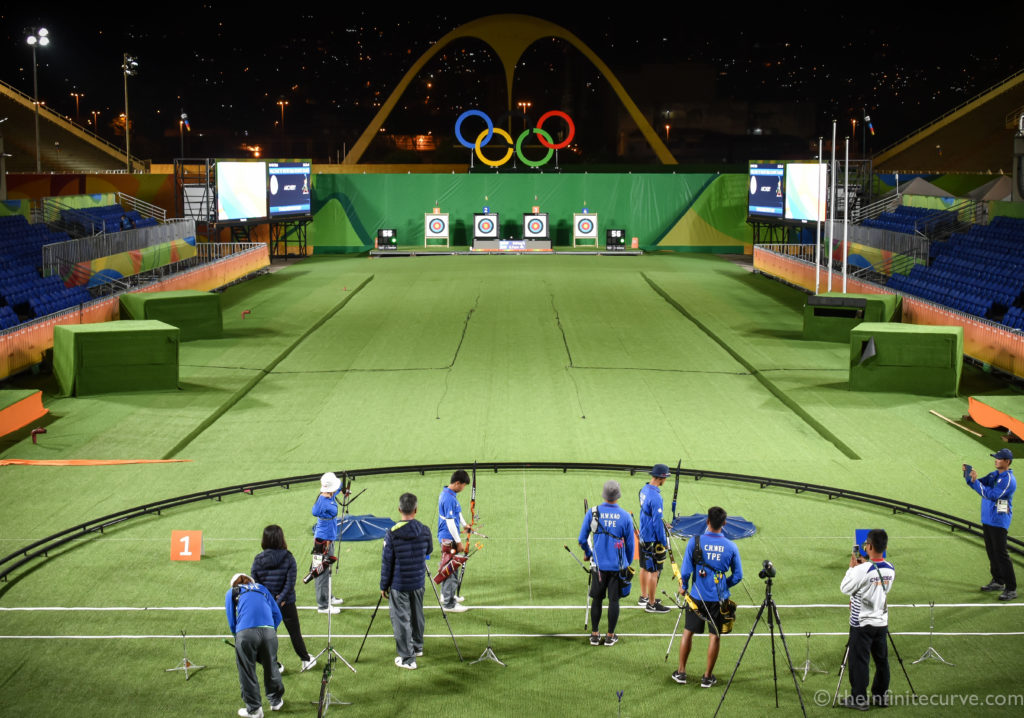
“The more I practice the luckier I get.” – quote attributed to golfer Gary Player.
If 2020 saw you training with no events to work towards, you clearly need a fresh challenge.
Current circumstances mean that many archers have found that they have had more time to shoot and noticed that as they have become fitter and more in control of their bows their scores have gone up.
At Bow, we asked ourselves could competitive club archers who have been shooting for a few years averaging around 500-550 for a WA70 round, focus a bit harder and smarter and achieve the Olympic qualifying scores (640 & 605 for men and women respectively), without having to give up work and time with the family.
We believe – without belittling the challenge – the answer for many is yes, and for some they are not too far away, but still put off going that bit extra because they have been told the effort and archery/life imbalance required is just too great.
Of course, just achieving these scores will not guarantee you one of the coveted 128 places (64 men and 64 women) at the next (or any) Olympic Games, but the satisfaction that you are shooting scores that would qualify and will make you one of the best archers in your country should spur you on.
However, it is also not unknown for an archer to be born in a country with no real international archery structure to still make it to the Olympics. Gavin Sutherland (Woking Archers) is a Zimbabwean archer who did just that, winning the necessary qualification rounds in Africa to represent Zimbabwe in Rio.
Of course, athletes changing nationalities to compete for another nation is relatively common, and several other archers in competitive nations have exploited birth links to other countries to shoot for another nation at the Games.
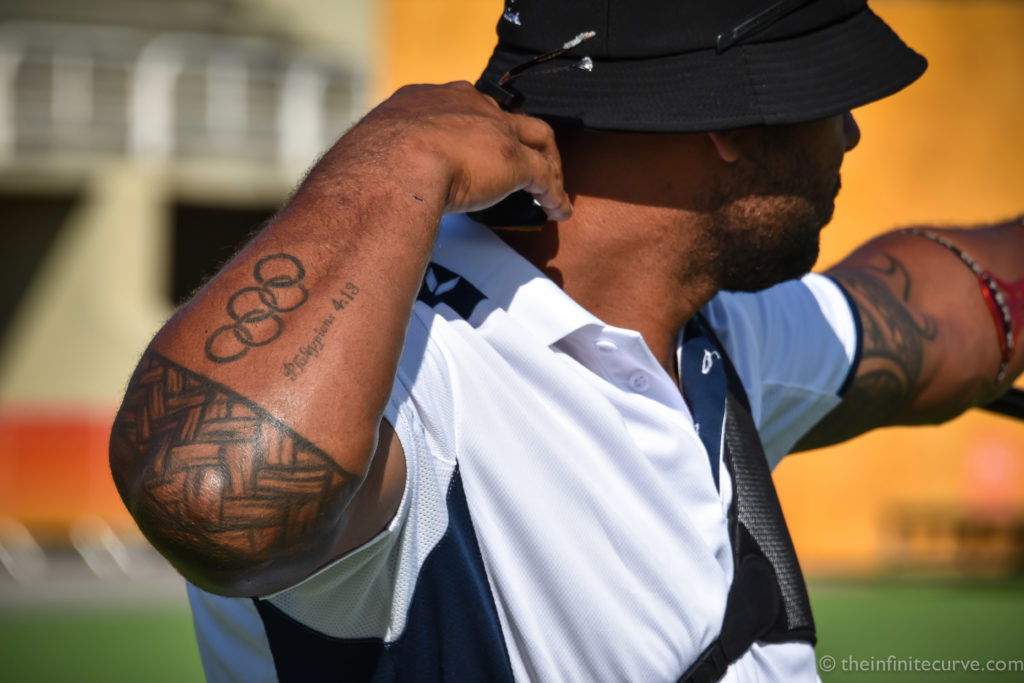
So we will explore how you can get yourself into a position of shooting scores that define archery as a sport and not just a hobby.
We will look at what it will take and the planning required, ensuring you give yourself the best chance to achieve this goal. We will also look at your equipment, using it correctly and ensuring it is fit for purpose and finally will look at how you can train smart to keep that archery/life balance working perfectly.
So, given that you have read this far it would suggest that you are on board with the concept. If you are hoping for a magic bullet or quick fix to improve your scores then, needless to say, you will be disappointed. To achieve this goal will still involve shooting a lot of arrows, but more importantly, just plonking arrows down the range will not be enough.
Shooting lots of arrows will help to get you fit, but the arrows you shoot will still have to be good shots otherwise you will just be relentlessly reinforcing bad habits, which will take far longer to fix at a later date.
For some this will be more arrows than you are currently shooting a week. How many arrows will depend on you, but setting a specific figure (as some coaches do, citing what others are doing, claim that a thousand arrows a week is common) will not help, the number is archer-specific and based on the time you have available, needless to say you will progress quicker by putting the work in.
Not all of these will be arrows shot at 70m and will include shots replicated in physical and mental training.
Do you really want to do this?
Rather like learning a new language, you are probably not going to be motivated by the tag line “it only requires 30 minutes a day to speak like a native”.
After a week or so this will be forgotten and each day’s exercises become a chore. There has to be a more substantial motivation, such as impressing your friends when on holiday or perhaps something more radical like a career change to drive you on.
It is the same with archery; this is your goal, so you will have to decide why you really want to do it and what it means to you. I know from experience that just chasing a score is not enough, even if it is as prestigious as an “Olympic Qualifying Score”. So what additional achievement will keep you going when the going gets tough?
It could be as simple as I love shooting, the more the better, just proving somebody wrong (a powerful motivation and used by Eddie the Eagle Edwards to become an Olympian), giving you the chance to win a national championship or even the building blocks to representing your region or country.
But what I am not advocating is 24/7 archery, where practice takes precedence over everything else in your life. The Korean teams got to where they are by astonishing training volumes; because that’s all they do, every day. It’s unlikely that this will be all you do.
This series is all about an archery/life balance and improving your enjoyment of your sport, so compared to a full time archer the end result may take a bit longer to achieve depending on your current ability.
You will need a plan
Without some idea as to how you are going to achieve this goal, the enthusiasm will soon be lost as you will have no idea if what you are doing is working. Putting a plan together can be quite daunting especially when you do not have all details from the start, but it does give you a focus to be refined along the way.
A plan on its own will not achieve your goal for you, that will be down to hard work, but it will help you to understand what you need to do and incorporates timely reality checks to confirm whether you are on the right track.
One of the most useful tools I have in my archery case is an exercise book where I record important details every time I shoot or train, it is a great resource to look back on and learn from.
Shooting details include location, time, date, the round shot, score (distances and overall), weather conditions during the day including the direction and strength of the wind, sight marks and adjustments made during the day and why, along with all the good and bad points of the day, even your mood at the start and end of the shoot.
Training includes the usual location date and time, the exercise, why I am doing it (what am I working on) and finally the things you have learnt and need to remember for the next time you shoot or train so you don’t make the same mistakes.
Planning the plan
If somebody writes your plan for you it will be meaningless, as it is your weekly schedule for shooting, training, fitness and occasional checks on bow set up. So below is a check list to help you.
A training plan can be as simple or as complicated as you wish to make it, it could be just a few lines from – I am going to shoot and train when I can, to a multi-tab Excel spreadsheet, with detailed shooting and training schedules, but in the end to be useful it will likely be somewhere between the two. Shooting is as important as writing the plan. Whatever you do, don’t use it as an excuse not to shoot because your plan is not finished.
Include checks along the way
This is a score-based goal, so reaching the following intermediate neat and tidy scores of 500/550/600 and 620 on a 70m round are relevant to understanding how you are progressing.
However you do not want these scores to become a mental barrier, so I would set all of the checks randomly higher, such as 509/557/607 and 629, so you do not fall short.
How often have you missed claiming a badge or PB by one or two points? To achieve each score milestone you will have to analyse what it will take to achieve it, so in effect it becomes a mini plan within the overall plan.
How long will it take?
Timescales are hard to predict as these need to be realistic, based on the time you can devote to your ambition so don’t be too impatient. I suggest for the plan you allow an average of 2 hours a day, 3 days a week for training and progress per 50 points which could take 3-6 months or more and then 3-6 months per 20 points over 600. This should make it easy as pie to make the team in Tokyo.
Fitness schedule
Archery fitness will be the key to your success, if you cannot control your bow and shoot the last arrow like the first, you will be throwing away points. Just shooting a round with your bow is one of the best ways of getting archery fit, it combines the equivalent of gym work and walking.
Shooting a WA1440 round, you will walk four miles, just lifting your bow will be the equivalent of 144 3kg dumb bell reps and the combined draw weight over the round is around three metric tonnes. Your training per week should also include shooting at long and short distances and at home, reversals and bow repetitions.
Don’t forget to allow time to warm up properly before any session. Other fitness routines can be impromptu and incorporated into your day such as walking or cycling part of your journey to work or the shops and the old (but effective) cliché of taking the stairs not the lift. Ideas for training smart will be covered in detail in part three.
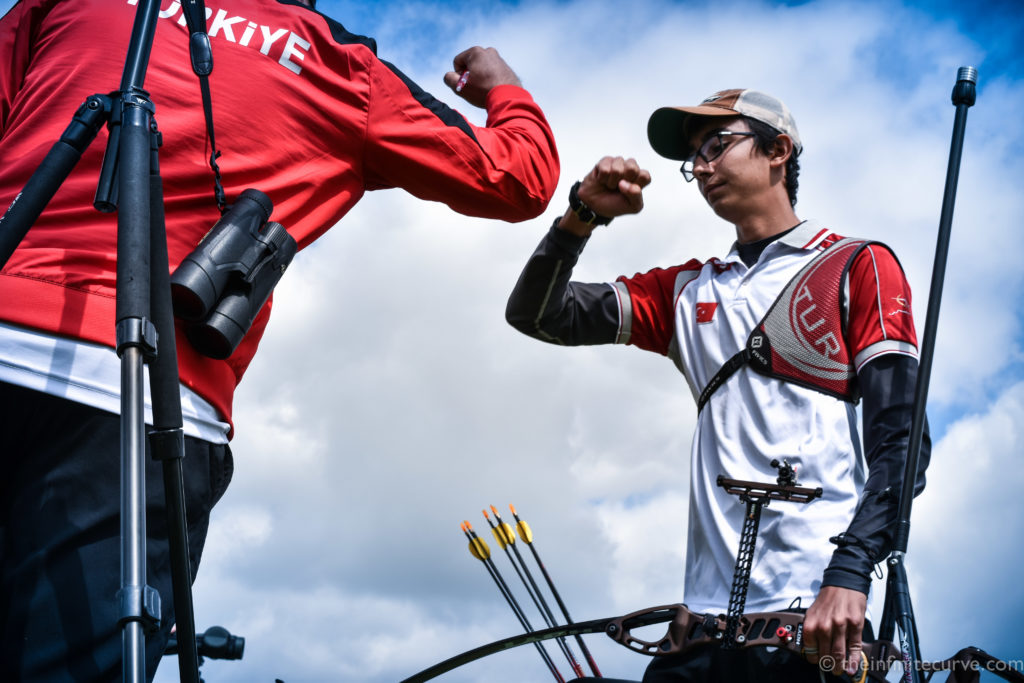
Diet & Sleep
As the usual analogy goes, cars and engines need good petrol to run well, likewise your body needs quality food and water to function, normally a good balanced diet is sufficient. (It should be noted that the archery elite peloton are notorious junk food hogs).
Sleep is important and getting at least eight hours a night will help your body recover and allows the brain time to assimilate what it is learning from your training.
Coaching
The form that has got you where you are today will need refinements to improve your consistency, so the help of a trusted coach will be useful, although I have seen archers intelligently apply self-help, via videos and books and just talking with like-minded archers to help them make the necessary adjustments.
Training the brain
It is important to the success of this goal that your brain is also on board; in particular your subconscious brain which, I have said many times is great at shooting good shots.
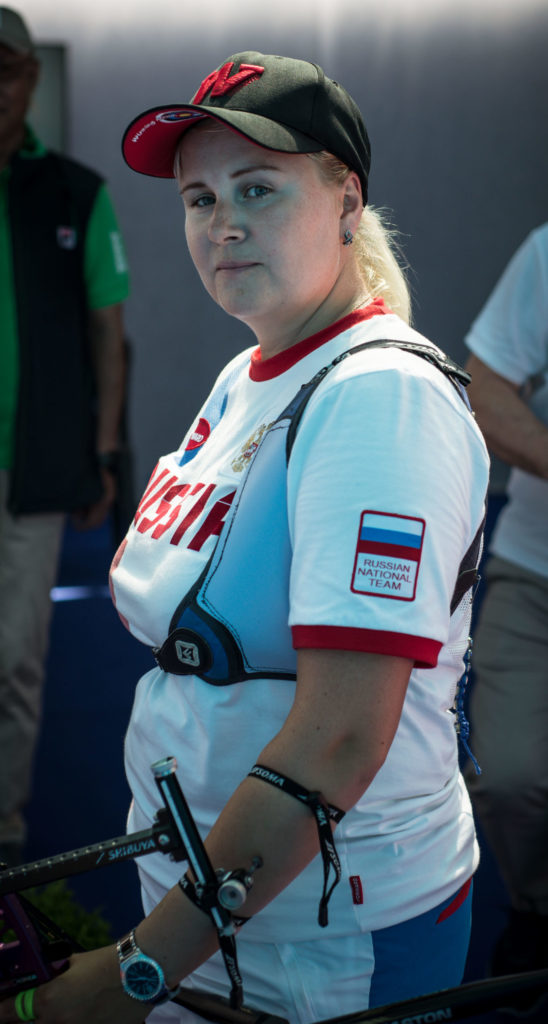
Regularly watching top archers shoot 10’s and visualise yourself doing the same will raise your comfort zone, so when you start shooting higher scores your brain will not freak out and do all it can to bring you back to where it feels comfortable. Top archers think about archery and executing good shoots every day.
Finally, Good luck writing the outline of your plan, but don’t delay in getting started by waiting for parts 2 & 3, for the time being get as much proper shooting in as you can and some additional fitness work.
Straight Bow?
It goes without saying that your latest shiny new bow is 100% straight – right? Unfortunately all equipment is made to a price, within reasonable manufacturing tolerances, so this may not be the case straight out of the box.
The methods used to make a bow straight are well understood, however, I still find that the most fundamental adjustment is always missing from bow manuals. No documentation these days suggests checking that your limb tips unfold and close straight, but it’s more important than you might think.
Most archers will set up their bow with the string running through the centre of the limb bolts and Beiter limb gauges, but pay no attention to the more important issue as to whether this adjustment upsets the limb tip alignment.
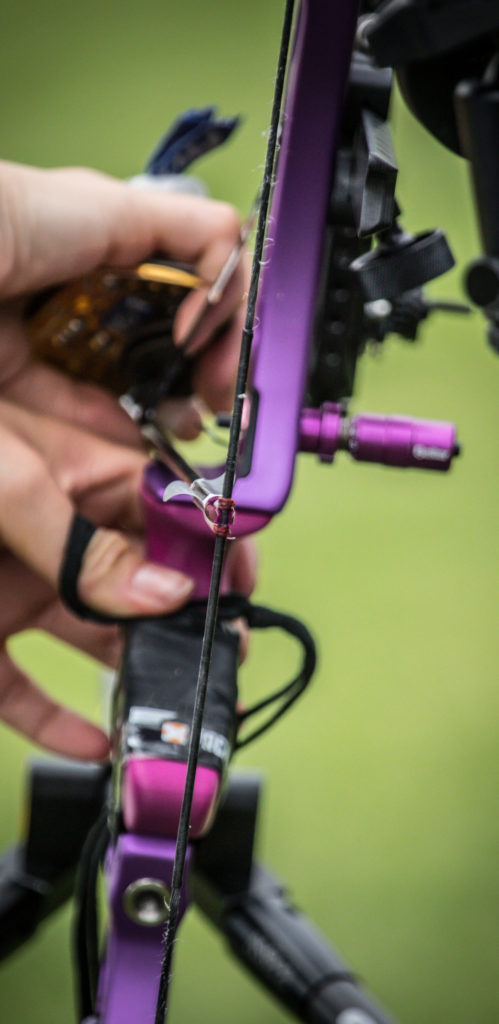
The limbs might be 100% straight, but it is assumed they are twisted as the adjustment required to straighten the tips sometimes puts the string very slightly off centre to the riser.
Much is made of the string position but it is not a big deal and why we have the limb alignment adjustment built into the riser. (See Ask The Experts issue 142)
A bow with off-centre limb tips is less efficient, less accurate and inconsistent from shot to shot, losing you points and making the selection of the correct arrow spine difficult. The string is also in the wrong position as it runs down the riser, which is then used as the basis for other bow set-up procedures and ends up magnifying errors.
Draw weight
Good scores are all about being able to control your bow and your shot, but the shorter the time your arrow is in the air, the less of an influence the weather will have on where it lands, so competitive archers should never sell themselves short on the draw weight they are shooting.
However, a bow that is too heavy to draw back or in mass weight will just lead to injury and help you to miss faster, so when selecting a draw weight a delicate balance is required.
Ideally, as a guide you should be able to hold your bow at full draw for 20 seconds for at least 10 repetitions and be able to shoot the last arrow of a round as if it was your first.
Bow tuning
The objective of your bow set up and tuning is to help launch the arrow to the ten with as little interference from the bow and you as possible. There are many short cuts and systems to help guide you through the process.
It is important to spend time making sure things are right, and especially checking measurements like bracing height each time you assemble your bow.
However, archers put far too much emphasis on these tests, rather than feeling and knowing when things are right and fall in to the trap of using these results as a security blanket, at the expense of good practice. I see it all the time on forums, people asking for help starting off with “my bow is set up properly but…”
The most important piece of equipment that will make bow tuning and set up quick and easy is selecting correctly spined arrows. Far too many archers confuse bow tuning with trying to manipulate incorrectly spined arrows to fly straight.
Arrows
Archers throw far too many points away without even knowing it – good shots, within reason, go where they are meant to. How badly you are punished for a bad shot in terms of lost points will depend on your arrow selection.
“If in doubt a stiff arrow spine is more forgiving than a weaker spine” is a statement that I hear all the time, although I have yet to see any evidence that this is true. What you require is the correct arrow spine for your ability.
As mentioned earlier, if you have the wrong spine arrows bow tuning turns into arrow bodging to get them to fly better. For most of us without expensive slow motion cameras capable of at least 3000fps, this selection can only be achieved by shooting a fletched arrow and a balanced bareshaft (“balanced” – the front of centre balance (FOC) of both arrows are the same) so the only difference is the lack of steerage from the vanes. This will really tell you what the two arrows (fletched and bareshaft) are doing.
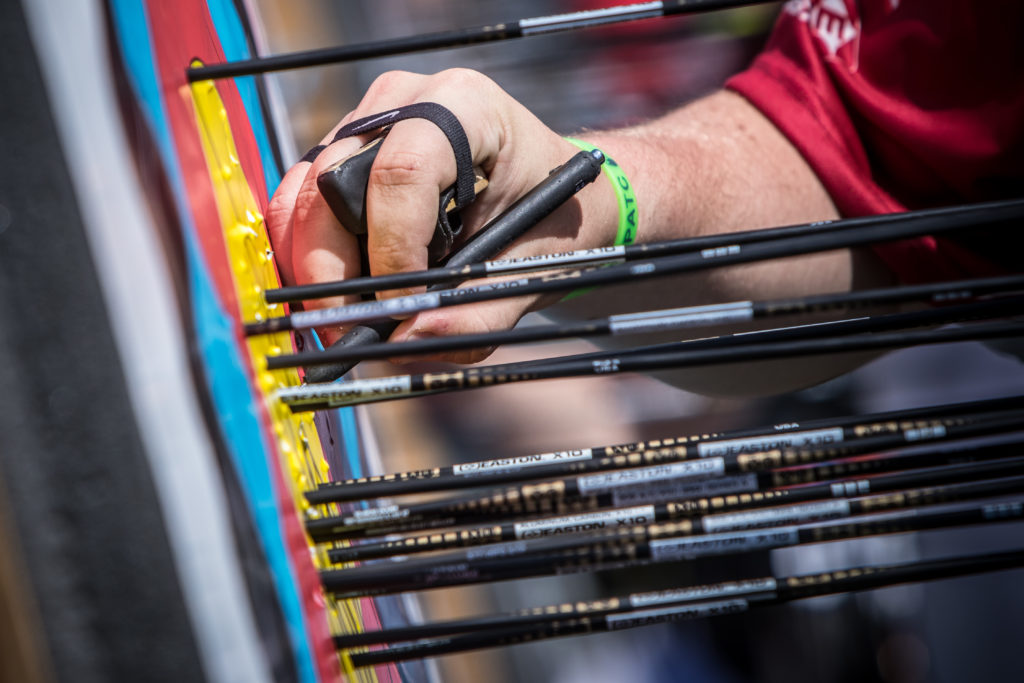
When choosing shafts a bareshaft test can be done at 18m and it involves comparing a range of spines suggested on the charts. After shooting a few ends you will be able to select the correct spine this being where the fletched and unfletched shafts of the same spine land closest to each other.
If you are not confident with this there are archery dealers that for a small charge will guide you through the process. Correctly spined arrows will make bow tuning simple, as the bow and especially the button will require little adjustment to get good groups.
Fine tuning: weak or stiff? When you have a poor release your arrow will behave stiffer because you slow down the arrow speed. For a right handed archer at 70m the arrow will land to the left of the gold and the poorer the release the further away it will be from the centre.
Even shooting over 600 points for a WA70 most of us are still shooting more average shots than good shots. So by tuning your arrows slightly weak, the bareshaft landing more to the right side (RH archer) of your average sized fletched group will mean an arrow that should be gold with a good shot will be an eight rather than a four or five with a less than perfect execution.
This is a personal choice and you may not have a clue what is best at this stage, so in this instance go with the bareshaft landing within your average group at 18m.
Improving your group size
If you have a good bareshaft test at 18m you should find your arrows are flying well at 70m and proper practice and refining your form will reap better and quicker results than fiddling with grub screws.
Most of us can only afford one full set of quality arrows that we use for competition and practice, so it is important to regularly check that all your set group together.
One of the keys to achieving your goal is not to throw away cheap points and any damage to shafts, nocks, pins and points will affect arrow flight and cost you points.
Keep an eye on your arrows by regularly inspecting them and plotting arrow positions; there are quite a few free scoring apps that will make the latter quick and easy.
Sight
- Don’t be afraid to move your sight pin to get arrows centred on the ten ring. In competitions those nines that turn into tens make all the difference. Learn to identify the centre of your groups through your spotting scope and act quickly.
- Always make notes in your notebook about how much adjustment was made, which you can refer to later, these are especially useful when you re-visit a tournament venue.
- Check that the position of your clicker is correct and check it regularly, as you become more archery fit your posture will improve and so will your draw length.
- On the shooting line always stand in the same place with the same feet position, use foot markers to help with this. Standing in a different place affects your aim and changes your body posture, which will show up when you are tired and you will find your arrows randomly drifting left and right.
Shooting
There are many books and ideas as to how you should shoot an arrow, some are simple, others are very complicated and I am sure you have your preferred method.
It is not for me to recommend a system, but if you break down all these shooting styles they all have the following in common: Keeping the drawing arm in line with the arrow, standing tall, a strong bow arm, a release where the hand follows the jaw line, finishing the shot before looking to see where your arrow has landed and making sure this is all really happening and is not just in your head.
All of this is hard to do from shot to shot and sometimes we get caught up in the moment and it all goes wrong, practice helps us to reduce these times, this is why practice can never be just flinging arrows at the target, all arrows must be shot to the best of your ability otherwise you are just conditioning your body to shoot poor shots.
To achieve your final goal your form will not have to be perfect with all your arrows in the 10 ring, but it does have to be a strong process, which is repeatable in all circumstances.
A change of mindset
This challenge is quite simple, all it involves is shooting six dozen arrows at 70m, many archers tend to break this down into ends of six arrows and work out what score is required per end. This makes concentrating on making six good shots in four minutes hard (see issue 141 “Why we fail”).
So I suggest you change your mindset and shoot one arrow 72 times to the best of your ability. This way you concentrate on the arrow to be shot, not the one just gone or the others in your quiver.
You shoot every arrow to the best of your ability; if your sight is in the right position then it should go in the gold. But trying too hard always results in poor shots; we are one of those sports where you need to be relaxed, trust in your training but at the same time determined and almost OCD in your shot preparation.
Learning from others
We are spoilt these days, with instant access to all the major archery events going on around the world. The brain is very good at understanding how to do something, so learn from the best and regularly watch the best archers in the world shooting and hitting the ten ring, this can help your subconscious subtly refine your form and raise your score comfort zone.
By eliminating as many of the silly errors mentioned above, you will definitely see an improvement in your scores. The hardest and most productive shooting error to eliminate is to learn not to shoot shots that are poorly prepared, as these will rarely hit the ten, even when you tell yourself differently whilst at full draw.
So practice coming down if a shot does not feel right. Unless of course you only have seven seconds left on the clock – so shoot that one and take your medicine – sometimes you can be lucky.
In the final part of this series we will look at fitness training, some shooting related drills and scoring exercises to help you to improve your form and accuracy and put you on the right path to achieving your goal.
The joy of shooting arrows
What you don’t want to lose sight of with this challenge is the joy of shooting arrows and the cameraderie of shooting with your club colleagues. Whatever happens and especially when things don’t go as well as expected, archery is a safety valve from all the day-to-day pressures of life and we do it because we enjoy it.
Pressure to do well is always a privilege that we earn; it is not a millstone around our neck. Likewise your fitness training should have a specific purpose and goal.
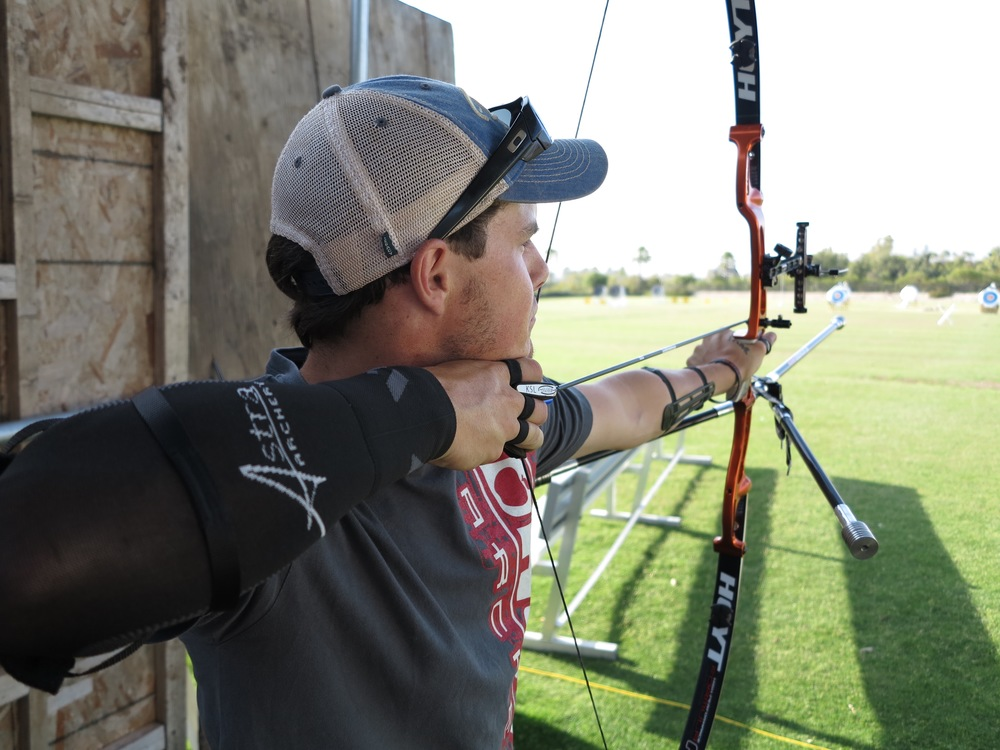
Will getting fitter help?
The simple reason that our archery improves when we are fitter is because we require a stable frame to launch the arrow, you also need to be able to finish a round as strongly as you started and the fitter you are the easier this will be to achieve.
The barrier is almost never finding the time to exercise, just the motivation and discipline to do it. In many ways this differentiates the top archers from the mediocrities.
Typically, most recreational archers are over-bowed and the bow arm is weak, contributing to sloppy shots and lost points. Just shooting more arrows will not fix this, so here we will concentrate on exercises to rectify this.
Additional equipment – or not
Press ups, sit ups and squats require no additional equipment and your bow can be used for many exercises, which we will look at later. The only investment I would suggest is an elbow harness, allowing you to shoot and draw up your bow safely; such as the Astra Shot Trainer, Formaster and/or Spigarelli Elbow Pad.
If you search the web, Richard Priestman, the GBR Olympic coach has posted a video on how to make one. The commercial ones all come with a range of suggested archery-related exercises to improve your bow fitness and shooting form.
Additionally, most of us have a stretchy band in our tackle box, alternatively Win & Win make two helpful optional products; a stretchy band to replicate shooting along with an additional strap from the bow hand to the front foot to create vertical resistance to strengthen your bow arm. This is a strange looking device which helps with practicing the feel of the draw and follow through of the shot.
Simple Fitness training
It is important to warm up the body before any shooting or exercise to reduce the chance of injury. I particularly like the range of archery specific exercises demonstrated by Naomi Folkard for World Archery on YouTube. In these pages there are also regular articles on fitness by Lucy O’Sullivan that will help your archery.
Cardiovascular fitness is important for general fitness and concentration, I find walking – especially uphill – helps with this and it is not so hard on the joints, jogging the same distance achieves the same result, just quicker. 20 squats, 10 sit ups and 10 wide grip press-ups repeated twice in 30 to 60 minutes each night are also not too taxing and a good start.
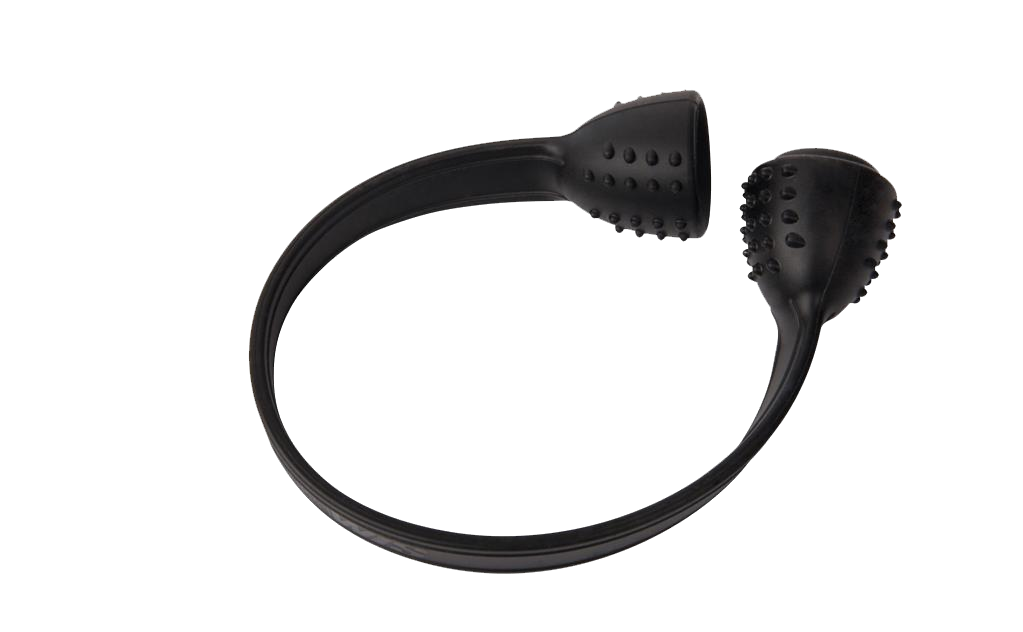
To strengthen your arms and shoulders, I find the most effective exercise is to hold a couple of dumbbells at arm’s length for at least a minute or as long as you can, ideally getting to a position of 10 repetitions each day. If you do not have dumbbells improvise with a couple of containers with around 2 litres (2kg) of liquid (fizzy drink bottles are popular).
It will be up to you how much general fitness you do weekly but without it you will not reach your goal, in addition to the exercises mentioned above we will now look at the training you can do using your bow, especially in the winter months when you cannot get down to the range.
Using your Bow to keep fit
Reversals are not a new training method, but I don’t believe there is a top archer that does not have these exercises as part of their daily routine. You will require an elbow harness mentioned earlier to execute these exercises most effectively.
The full use of these devices is an article in itself. Most importantly it will allow you to safely draw your bow with your fingers (including tab) on the string or just by drawing back with your elbow. Either method will also help you to understand good back tension and keeping in line.
A popular strength exercise is to draw your bow and hold for 5 – 10 seconds at full draw with good form and come down and repeat as many times as you can, again either holding the string or just using your elbow and shoulders.
At home and set up correctly the elbow harness will allow you to shoot your bow safely with or without an arrow, the former to help with clicker control and shot execution – when shooting an arrow your boss should be around longrod plus half a metre from your bow as the arrow loses trajectory quickly.
The elbow harness’s main party trick is a no-nonsense reaction and you will soon find out if you are using your back, as the collapse of the shoulders will be more pronounced.
The more you use this device weekly the quicker you will improve your bow fitness, posture, release, finishing the shot without collapsing and most importantly your scores.
The Win & Win Training band is also good for improving your posture, bow arm steadiness and strength and is also portable for use anywhere.
Shooting training
Every time you shoot, whether in competition or training, there must a be a purpose, in competition it is to test the effectiveness of your training to date, in training it should be to work on one specific issue, either way by default you will be getting fitter.
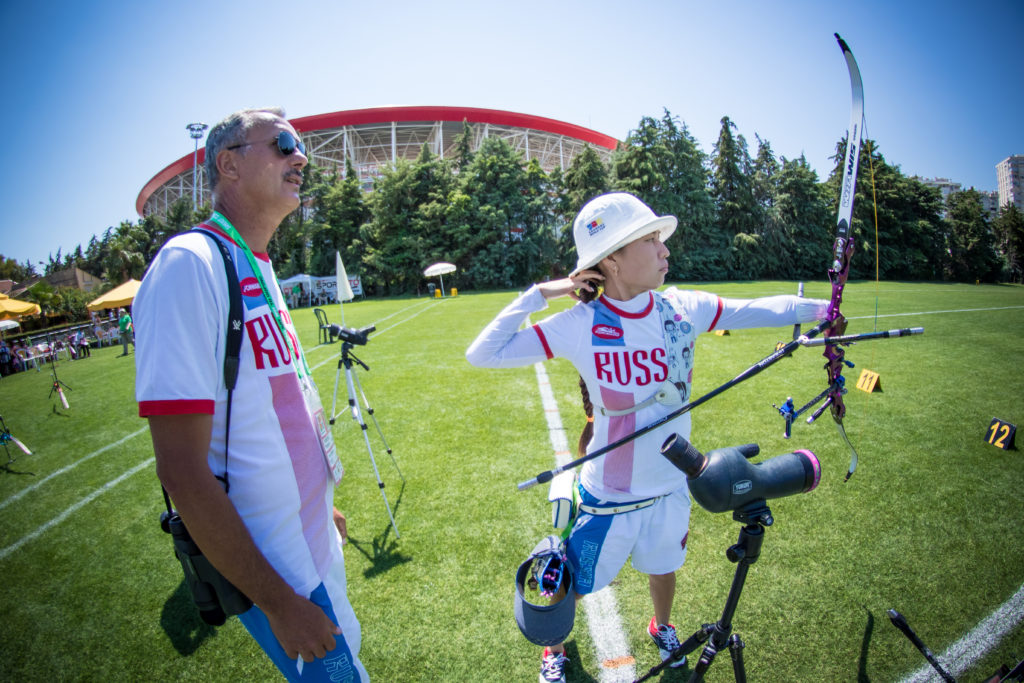
When shooting at 70m always walk briskly to the target and back, not only will you get more arrows in a session but again it will help you increase your heart rate. In timed competition it will give you more time to get ready for the next end.
For those that have decided on a set weekly number of arrows to be shot (at least 300 working towards 500 to be effective), each exercise that involves drawing up your bow or stretchy band is equivalent to an arrow shot. When doing any exercises involving holding the bow at full draw for over ten seconds add the equivalent of five shots.
Mental drills when scoring
Chasing a score-based goal is very hard, and it is easy to miss the total by a point or two and end up getting into a mental block, usually because your subconscious is not comfortable with the higher level you are shooting and it slowly brings you back to a comfortable level.
This usually shows up when people score a round and start to predict the result at the end of the day, adding additional pressure to their shooting. But it is also important to keep score and get used to scoring, likewise seeing and expecting most of your arrows to be in the red and gold.
To help with the transition I suggest trying a simpler scoring system until you are comfortable with a score book in your hand. You select a score at the beginning of a round, something close to your PB, say 552, so each end you should be scoring 46 or more, if you score 48 you are plus 2, next end 45 is minus 1 so your running total is plus 1 and so on, hopefully by the end of the round you should finish on a plus.
Never ever give up at a competition if your scores are not what you expect, unless of course you are injured or it is too dangerous to shoot. You can always learn from the next arrow and working through problems for yourself is the only way you are going to achieve this goal.
Analysis of each shot during training
To achieve this goal you will need to increase your ten count and to do this you will need to improve your shot consistency. This is very hard to measure and quite subjective, most archers attribute a good shot to the one that goes in the 10 and feels effortless.
This might be considered utopian right now, but you can also shoot a good shot and it does not go in the 10, and you have to analyse why – is it just the weather, you aimed in the wrong place or your sight pin needs adjusting. I was introduced to a simple shot analysis system a few years ago, rating shots from 0 to 2 with 0 being a good shot.
Obviously over time the object is to shoot more 0’s and 1’s with the arrows landing close to the ten. This analysis can also be used to analyse a single change in form rather than the whole shot process.
Blank bale shooting
Blank bale shooting at short distance (2-3m) can be used for bow fitness by shooting good arrows to keep your arrow count up without the walking to collect your arrows. It is also good to help you refine a change in form, especially where it can be combined safely with shooting with your eyes closed.
What’s in your head when you shoot?
When you shoot you need your shots to be executed by your subconscious not your conscious brain. This is achieved by all the training and shots you make, as your subconscious will learn from this.
Yes, you need help setting up the shot from your conscious brain but as soon as you start to draw, your conscious brain should only be given one simple job to keep it occupied and stop it interfering with the shot, such as repeating “strong shot” “Strong Bow Arm” – again, see the “Why we fail” article in issue 142.
Making a change
You’ve probably heard that you should only change one piece of equipment or adjust things one at a time. When you make a change to your form or equipment it can take many shots for your subconscious to fully integrate it in to your shot routine, some suggest anything up to 2000 shots, so it is vital to be patient when looking for results.
Good luck
So now you have the basic information to help you to achieve your goal, the important thing is to remember that only you can do this, success will all be down to you.
Apart from reversals that are proven to help you, you own your training program and there are many different exercises and new ideas coming online all the time to consider.
As you progress from 500 points to 600 points, you will start to understand what works for you and over 600 you will realise that progress will be a lot slower and require more work for those incremental point gains.
For some archers already shooting over 600 this will be a one or two year goal, for others a lifetime’s work and a gradual year on year improvement. But for everyone it should be an enjoyable challenge, you will feel healthier, maybe win a few medals and trophies along the way and fitness training will just become a part of your archery routine.
Finally, you will learn more about your archery and the joy of shooting arrows by expecting rather than hoping they land where you are aiming.


Thanks for this valuable information and brief,
Also thanks for motivation
As I plan to shoot and get MQS 640 to qualify
After I stop 2 years of shooting
I progress in plan
And development may score from 620 to 645 before may 2021
Thank again
Mujahid adam
Forgot to mention the cost of the “dream”. I’m not talking the equipment cost, but the financial investment of shooting the World Cup and whatever else your country’s archery body requires to rank and make the team. Travel and lodging is not cheap.
I haven’t shot competition archery in 45 yrs. but now I’m thinking about it again at age 71 (go figure). This article gave me some hope since I’ve had 2 back surgeries, bi-pass surgery and a stroke. I still have the competitive feeling and plan on going to the state championships just to check out the senior competition. Back when, I played music at night and shot bow 4-6hrs. a day and got good at winning tournaments. Equipment has changed and it’ll cost me about 3k to get what I want. Hope I don’t get frustrated. Wish me luck and I’ll let you know of my progress.